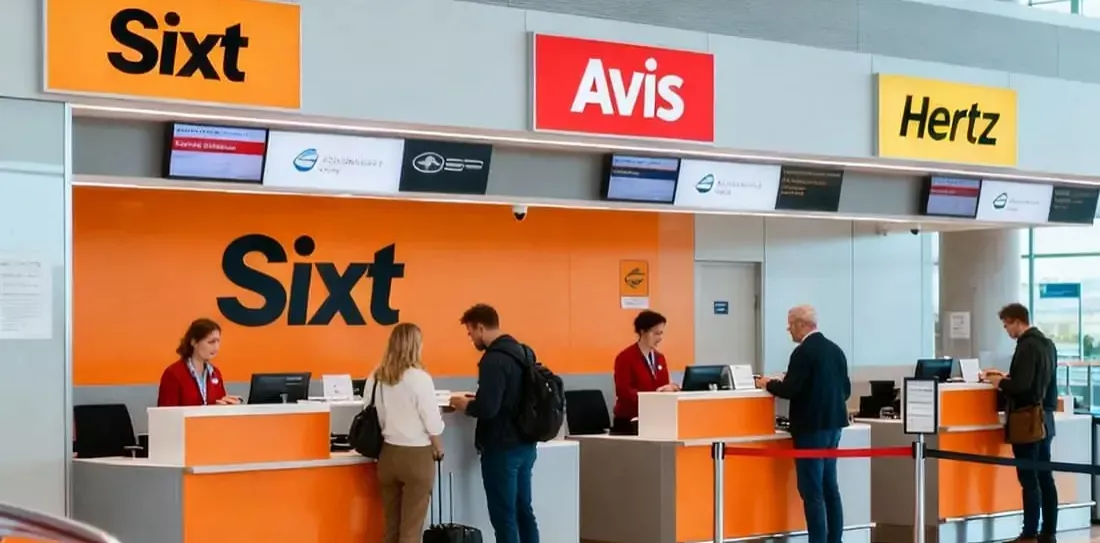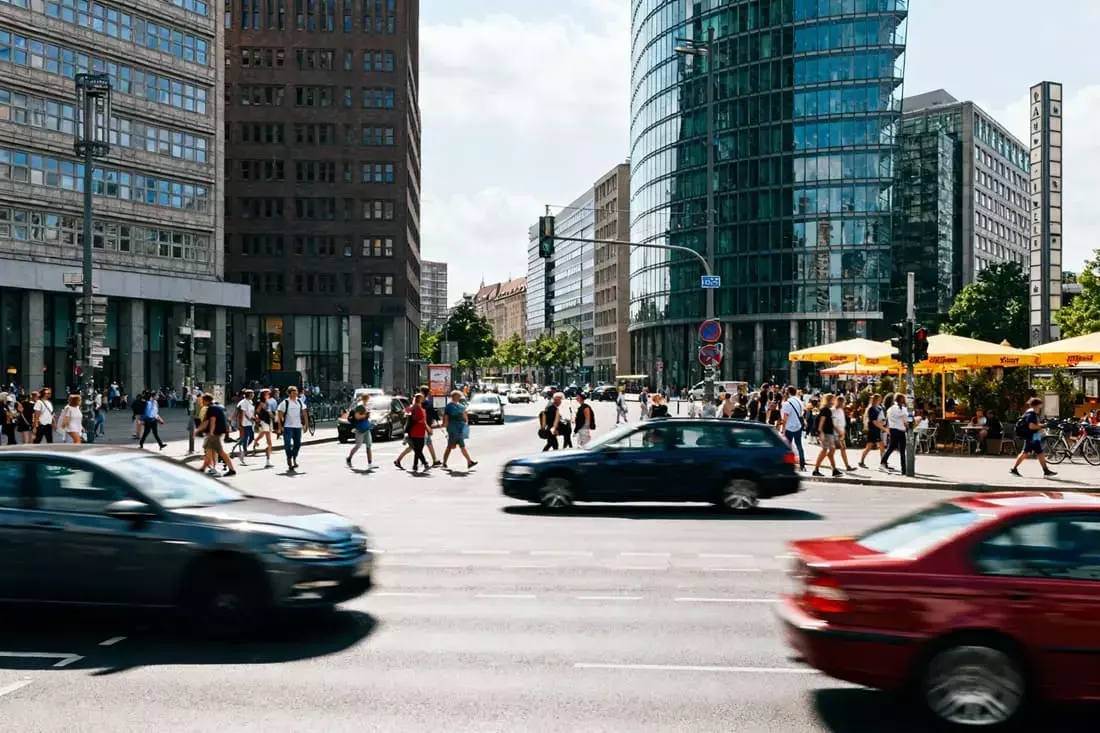
Car Rental in Europe
Article content
- How the Market Works, Who the Main Players Are, and What Travelers Should Know
- How Car Rental Evolved Across Europe
- Car Rental in Europe’s Major Cities: What Makes Each One Different
- Other capitals
- Deposits, Insurance, and Prices Across Europe
- Where It’s Easiest to Pick Up a Car
- Common Mistakes Travelers Make
Car rental in Europe isn’t just a backup option anymore. It’s part of the travel infrastructure that grew alongside the rise of low-cost flights, expanding metro areas, and new connections between major cities. And the easiest way to understand how this system really works is to look at the biggest hubs: Paris, Rome, Berlin, London, Madrid, Barcelona, Bucharest, and several other capitals where major rental companies keep their main offices and fleet centers.
How the Market Works, Who the Main Players Are, and What Travelers Should Know
Over the past two decades, the market has changed dramatically: paper contracts and long airport lines gave way to digital keys, remote pickup, and services that operate entirely without physical offices. Still, the core of the European rental industry is built around the same major brands — Sixt, Europcar, Hertz, Avis, Budget, Enterprise — supported by strong local operators like Sicily by Car in Italy, Autonom in Romania, and Goldcar in Spain.
How Car Rental Evolved Across Europe
Before the 2000s, renting a car in Europe looked almost identical everywhere: airport counters, paper forms, queues, and a walk-around inspection with an employee. Everything shifted once low-cost airlines made city-to-city travel affordable and frequent.
More flights meant more travelers arriving in cities where public transport didn’t always cover long-distance attractions. Online booking platforms — Rentalcars, Kayak, Expedia — added transparency: travelers finally could compare prices and terms before landing.
Then came digital pickup. Companies like Virtuo in France and Spain and UFODrive in Germany and the Netherlands removed the office from the process entirely: you unlock the car with your phone, and all the paperwork is handled online. Traditional brands followed the trend — in France, Germany, and Spain, key boxes and digital processes have become standard.
Today, car rental in the European Union exists in several formats at once: classic airport offices, app-based remote pickup, and a range of local operators working under shared EU-wide technical and insurance standards. These formats coexist smoothly, giving travelers room to choose based on their route and budget.
Car Rental in Europe’s Major Cities: What Makes Each One Different
Below is a breakdown of the biggest European capitals where the differences between rental markets are easiest to notice. Each city has its own traffic habits, parking rules, and mix of rental brands.
Car Rental in Paris

Paris hosts Europcar, Sixt, Hertz, Avis, Budget, Enterprise, plus the fully digital Virtuo service.
The city itself isn’t the most convenient place to drive — narrow streets, ongoing roadwork, and limited parking shape local habits. This is why most travelers rent a car not for Paris, but for trips in the region: the Loire Valley, Normandy, Reims, Dijon, Orléans, and small towns that are hard to reach by train.
The best pickup points are the major airports — CDG (Charles de Gaulle) and Orly — with large parking areas and quick access to highways.
Car Rental in Berlin

Berlin is a huge, spread-out city with long distances between neighborhoods. Rental companies include Sixt, Hertz, Europcar, Enterprise, Buchbinder. Since the opening of BER airport, pickup has become more organized: multi-level parking structures, compact office layouts, and a quick exit to the Berliner Ring highway.
A rental car helps a lot if you're heading beyond the city — Berlin connects to Dresden, Leipzig, Hamburg, Frankfurt, and Poland via fast autobahns. Many gas stations work in self-service mode 24/7, which is common in Germany.
The German market combines major international brands and local operators like Buchbinder. In recent years, new international services that originally started in Eastern Europe have entered Germany as well — one example is Getmancar car rental in Berlin, mentioned once as required.
Car Rental in Rome

Italy has one of the most active rental markets in Europe, but Rome adds a special twist — ZTL zones. These restricted areas in the historic center allow access only with a permit. Cameras track license plates, and fines almost always arrive later.
Because of that, travelers usually pick up cars at the airports Fiumicino (FCO) or Ciampino (CIA).
Compact cars are not a recommendation — they’re a necessity. Parking spaces in central Rome were originally built around the size of a Fiat 500.
Rome has all major brands: Europcar, Sicily by Car, Maggiore, Hertz, Budget, Avis, Sixt.
Car Rental in Madrid and Barcelona
Spain is one of the most competitive rental markets in Europe. Companies include Goldcar, Centauro, Record Go, Firefly, Sixt, Hertz, Enterprise, Avis, Budget. Budget brands are extremely common, but their terms are strict — higher deposits, tighter fuel policies, limited insurance.
At Madrid Barajas, pickup is divided between terminals, and airport prices are often cheaper than downtown.
At Barcelona El Prat, travelers usually rent a car for coastal routes: Costa Brava, Girona, Tarragona, and national parks around Catalonia.
Car Rental in London

London is served by Enterprise, Hertz, Sixt, Europcar, Green Motion.
Two city rules shape rental habits: the ULEZ environmental zone and the Congestion Charge for driving into the center. Because of this, most travelers rent from airports — Heathrow, Gatwick, Stansted, or Luton — where the process is simpler and the prices more forgiving.
Car Rental in Bucharest

Car rental in Bucharest is one of the most budget-friendly options in Eastern Europe, especially if you're planning a road trip into the Carpathian Mountains. At Henri Coandă (OTP) airport, you’ll find Autonom, Klass Wagen, Avis, Budget, Sixt, Enterprise, Flexicar Romania — real, established operators with large fleets.
Some companies don’t keep their offices inside the terminal. Instead, they run free shuttle vans: you exit the terminal, walk to the shuttle stop, and a branded minibus takes you to the pickup lot in a few minutes. This setup is common in Romania, Spain, and Portugal.
Deposits in Bucharest tend to be higher than travelers expect — usually €500–€1200. Zero-excess insurance (full coverage) is widely available but often excludes glass, tires, and underbody protection.
Most travelers rent a car not for the city itself but for mountain routes: Sinaia, Brașov, Azuga, Bran, and nearby national parks.
Other capitals
Vienna
Vienna is served by Europcar, Sixt, and Megadrive.
Cross-border travel is usually allowed, though premium classes may have restrictions.
Prague
Prague hosts Rent Plus, Sixt, Europcar, and Avis. Summer demand is high, and prices shift significantly between seasons.
Amsterdam
The best pickup point is Schiphol Airport — downtown Amsterdam has narrow streets and very limited parking availability.
Lisbon
Local operators like Guerin and Drive on Holidays are strong here. Travelers usually rent cars for coastal drives and for road trips south toward the Algarve.
Deposits, Insurance, and Prices Across Europe
Average ranges for 2024–2025:
Country | Deposit | Excess | Avg. Daily Price |
| Germany | €500–1500 | €800–1500 | €30–60 |
| France | €700–1700 | €900–1500 | €35–65 |
| Italy | €600–1200 | €1000–1800 | €25–55 |
| Spain | €500–1200 | €900–1500 | €20–45 |
| Romania | €500–1200 | €900–1500 | €20–40 |
| Portugal | €600–1400 | €1000–1600 | €20–50 |
Where It’s Easiest to Pick Up a Car
Airports are generally the best choice: broad fleet options, quick highway access, lower prices.
City centers are more expensive and harder to navigate.
Train stations are a balanced alternative — Berlin Hbf, Roma Termini, Madrid Atocha, Gare de Lyon.
Common Mistakes Travelers Make
- Entering Italy’s ZTL zones.
- Returning the car without a full tank.
- Dropping the car off at night with no inspection.
- Choosing a car that’s too large for historic districts.
- Returning the vehicle late — often charged as an extra full day.
Car rental in Europe is built around a large network of operators, airport-driven infrastructure, and a huge variety of routes outside major capitals. Paris, Berlin, Rome, Madrid, London, Barcelona, and Bucharest all have their own traffic rules, rental habits, and pricing — but in every case, having a car allows travelers to shape routes at their own pace, especially outside the city center.
Similar articles

Electric Car Sharing in Bratislava — FlexiBee
An in-depth look at FlexiBee, Bratislava’s local electric car sharing service. Fleet details, pricing, website, and the reasons why the project didn’t last

The Most Common Stereotypes About Ukrainians
There are a lot of stereotypes about every nation that annoy those to whom they refer. In this article, we will consider false stereotypes about Ukrainians

Slovakia: Car Sharing Opportunities
Car Sharing market in Slovakia analyzed: ShareCar and FlexiBee compared, their strengths and weaknesses, and opportunities for new operators
